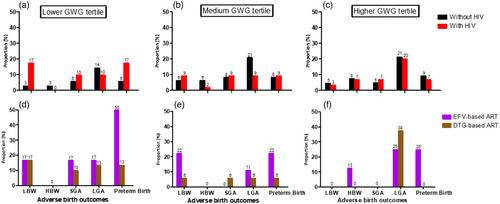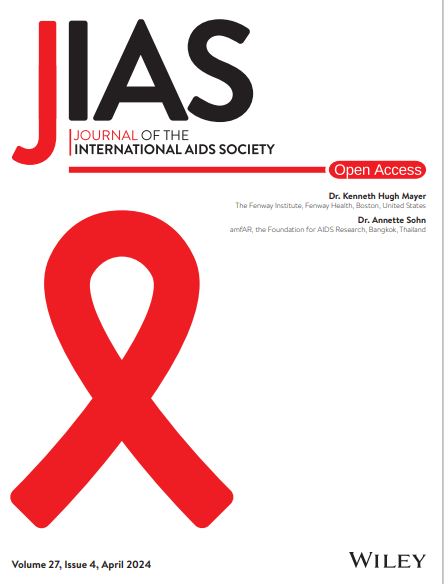Gestational weight gain and adverse birth outcomes in South African women with HIV on antiretroviral therapy and without HIV: a prospective cohort study
Abstract
Introduction
Outside of pregnancy, evidence shows that persons with HIV initiating or switching to dolutegravir (DTG)-based antiretroviral therapy (ART) experience greater weight gain compared to those on other ART classes. However, there are few data on the impact of DTG-based ART on gestational weight gain (GWG) in sub-Saharan Africa where HIV is most common. According to the National Academy of Medicine (NAM), GWG below and above NAM guidelines is associated with adverse birth outcomes. Therefore, the objective of this study was to describe GWG by HIV status and ART regimen, and examine the associations with adverse birth outcomes.
Methods
We enrolled pregnant women with HIV (WHIV) and without HIV (≥18 years) in a peri-urban primary healthcare facility in Cape Town, South Africa between 2019 and 2022. GWG was study-measured at 24–28 (baseline) and 33–38 weeks gestation and converted to GWG rate (kg/week) in accordance with NAM guidelines. GWG z-scores were generated using the INTEGROWTH-21 and US standards to account for differing lengths of gestation. Birth outcome data were obtained from medical records. Associations of GWG z-score with adverse birth outcomes were assessed using multivariable linear or log-binomial regression.
Results
Among 292 participants (48% WHIV), median age was 29 years (IQR, 25–33), median pre-pregnancy body mass index (BMI) was 31 kg/m2 (IQR, 26–36) and 20% were primiparous at baseline. The median weekly rate of GWG was 0.30 kg/week (IQR, 0.12–0.50), 35% had GWG below NAM standards (59% WHIV) and 48% had GWG above NAM standards (36% WHIV). WHIV gained weight more slowly (0.25 vs. 0.37 kg/week, p<0.01) than women without HIV. Weekly rate of GWG did not differ by ART regimen (DTG-based ART 0.25 vs. efavirenz-based ART 0.27 kg/week, p = 0.80). In multivariable analyses, GWG z-score was positively associated with continuous birth weight (mean difference = 68.53 95% CI 8.96, 128.10) and categorical high birth weight of >4000 g (RR = 2.18 95% CI 1.18, 4.01).
Conclusions
Despite slower GWG among WHIV, nearly half of all women gained weight faster than recommended by the NAM. GWG was positively associated with infant birth weight. Interventions to support healthy GWG in sub-Saharan Africa are urgently needed.


| 公司名称 | 产品信息 | 采购帮参考价格 |
|---|
 求助内容:
求助内容: 应助结果提醒方式:
应助结果提醒方式:


